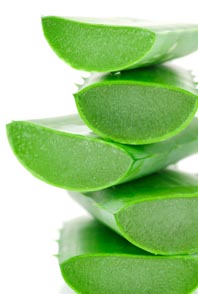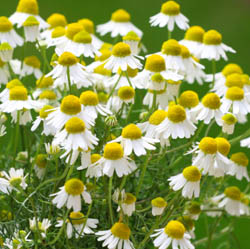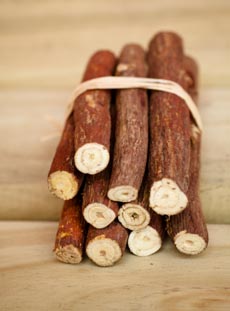Linda B. White, M.D.
We Americans treasure clear, luminous skin. We also spend several billion dollars on skin-care products. Healthy skin is not only beautiful, but also essential to good health. Among other functions, the skin manufactures vitamin D, helps regulate body temperature, keeps moisture in, and keeps harsh chemicals and microbes out. Skin diseases can be a manifestation of deeper illness (e.g., the rash of scarlet fever) or the main sign of an annoying malady such an allergic reaction to the nickel backing of a watch.
After minor injuries (scrapes, cuts, mild burns), the five most common skin conditions are acne, eczema (also called atopic dermatitis), psoriasis, and skin cancer. The exact cause of acne isn’t known. However, the rise in androgens (male hormones produced in men and women) during puberty definitely contributes to the surplus oil that can block the pores. Stress may also aggravate acne, possibly because of hormonal alterations and a rise in inflammatory chemicals.
Eczema, which tends to run in families, is associated with hay fever and asthma. Sensitivity to allergens (which may never be identified) leads to redness, scaling, and itching. Stress can aggravate the eczema and psoriasis.
Psoriasis is an inflammatory skin that, while often chronic, waxes and wanes. Triggers include stress, physical trauma, infections (e.g., strep throat), low blood calcium levels, gluten sensitivity, and some medications.

Skin cancer (basal cell carcinoma, squamous cell carcinoma, and melanoma) are common, particularly in fair-skinned people with a history of lots of ultraviolet light exposure. For more information on these conditions, consult your doctor and a reputable source such as the Mayo Clinic (www.mayoclinic.com). Fortunately, a number of herbs have benefits for the skin. They can reduce inflammation, discourage infection, normalize hormones, protect against damage from ultraviolet light, and promote healing. Here are some of the skin herbs with solid research backing.
Aloe (Aloe vera) has such a strong reputation for repairing damaged skin that it is a frequent ingredient in commercial skin-care products. The leaf’s inner gel has been used for thousands of years. The ancient Greek physician Dioscorides used the gel to treat wounds. The Egyptian Queen Cleopatra reportedly used it a beauty aid. The gel reduces inflammation and itching, and promotes wound healing. Topical aloe reduces the redness and flakiness of psoriasis. One study found an aloe vera cream slightly more effective than a topical steroid. Other studies show promise in relieving seborrheic dermatitis, frostbite, and burns.
Calendula (Calendula officinalis), also known as pot marigold, is anti-inflammatory, promotes skin healing, and inhibits some bacteria. Calendula creams have been shown to relieve skin inflammation. This herb can potentially cause allergic reactions in sensitive people, though not nearly as often as its botanical cousin, ragweed.
Comfrey (Symphytum officinale) contains allantoin, a chemical that protects the skin and promotes new skin cell growth. Purified allantoin can be found in some commercial lotions. It’s said to help ‘knit’ cells back together after a laceration or abrasion. Comfrey recommended for external use only because it contains pyrrolizidine alkaloids, chemicals which, in large amounts, can damage the liver. These chemicals are higher in the roots and young leaves, and lowest in mature leaves. Both the leaves and roots can be used to make salves. Moistened leaves can be applied directly to the skin as a poultice.
Make Your Own Skin Salve
Many first-aid skin salves you’ll find in the store contain comfrey and calendula. You can also make your own. Fill a clear glass jar 2/3 of the way full of dried, ground herbs. Cover those gorgeously orange dried calendula flowers and comfrey (and/or other skin-friendly herbs) with a good quality oil (e.g., almond, apricot, olive, grape seed). Mix well and add enough oil so that you have at least a half inch sitting above the herbs. Put the jar in a sunny window. Shake each day and strain in a week or two. Strain the infused oil through a cheese cloth, and pour into a saucepan. Over very low heat (a double-boiler reduces the risk of burning the oil), warm the oil and add 1 ounce (about ¼ c) grated beeswax for each cup of oil. Stir until the beeswax melts into the oil. Remove from heat. Immediately pour into small, wide-mouthed jars. You can add a few drops of tea tree oil to preserve. Store in a cool, dry, dark place. Apply as needed.

German chamomile (Matricaria recutita) is anti-inflammatory herb and may offer help for people with inflammatory skin conditions. A chamomile-containing cream was shown to be mildly superior to a steroid cream in people with eczema. If psychological stress makes your skin flare up, consider drinking chamomile tea, which has a gently relaxing effect. Know that, if you’re allergic to ragweed, you may also be allergic to chamomile (which is a in the same plant family).
Echinacea (E. purpurea, angustifolia, pallida), while more famous for its immune-enhancing properties, was used topically by Native Americans and white settlers to heal wounds, insect stings, and snake bites. Scientific studies confirm that plant extracts are anti-inflammatory and hasten skin repair. Chemical constituents of echinacea also protect collagen (the protein that gives skin its strength) from free radical damage, as can happen after exposure to ultraviolet light. The plant also inhibits hyaluronidase, an enzyme that digests connective tissue (including the gel-like matrix in the deeper layers of the skin). Theoretically, inhibit of this enzyme can help keep that skin Jello intact, retard the spread of toxins through tissues, and keep tissues from leaking fluids (as happens after a bee sting). Echinacea also has some activity against bacterial and fungi.
Green tea (Camellia sinensis) contains antioxidant flavonoids that offer protection against damage from ultraviolet light (sunburn, skin aging, skin cancer). Benefits are derived both from drinking tea and applying products containing green tea extracts to the skin. Additionally, one study found that a 2% green tea lotion reduced acne.

Licorice root (Glycyrrhiza glabra) contains soothing and anti-inflammatory chemicals. One study found that a chemical in licorice improved the action of topical steroids in psoriasis. Licorice gels (standardized for the chemical glycyrrhetinic acid) have been shown to improve eczema. A study in people with rosacea, a condition marked by periodic pimples and redness, found that a special licorice root extract reduced skin redness. You buy a commercial gel or make a strong tea from licorice root, strain, and cool, then apply compresses to your skin. That gooeyness that you feel is soothing and emollient. Marsh mallow root (Althaea officinalis) is also demulcent. Put a tablespoon of ground root in a cup, cover with cool water, and let sit 15 minutes or so. Strain and apply the solution with a clean cloth.
The yellow roots of Oregon grape (Mahonia aquifolium) and goldenseal (Hydrastis Canadensis) are antimicrobial and anti-inflammatory. You can make compresses or poultices from the dried, powdered root and apply to boils and wounds. (Do see your doctor if you suspect a wound has become infected.) One study found that a homeopathic product derived from Oregon grape (Relieva®) reduced psoriasis symptoms.
Pomegranate (Punica granatum) ruby red fruit contains antioxidant pigments called anthocyanins. Internal consumption produces anticancer effects, including in the skin. Ultraviolet light can cause sunburn, accelerate skin aging, and lead to skin cancer. A study in skin cultures found that applications of pomegranate juice, oil, and a special extract all protected against several measures of UV damage.
St. John’s wort
(
Hypericum perforatum), while better known as an antidepressant, can be made into a red-tinged oil for the skin. External applications have been used to treat wounds, burns, and nerve injury. It has anti-inflammatory and antibacterial effects. A cream made from St. John’s wort has been shown to reduce eczema. Both internal and external use can increase sensitivity to the sun.
Tea tree (Melaleuca alternifolia) has garnered popularity as an antimicrobial agent. It has activity against bacteria, viruses, fungi, and it turns out, head lice. It may also have an antihistamine effect, thereby relieve hives. Topical applications of 5% tea tree oil gel have been proven as effective as 5% benzoyl peroxide (Oxy-5® and others). You can also try dotting full-strength lavender essential oil onto pimples. A recent study found that a product containing both tea tree and lavender essential oil, along with a “suffocation” product, more effective in treating head lice in children than a conventional product containing pyrethrins and piperonyl butoxide. A case report found that 12 days of topical applications cleared warts from the finger of a child. Tea tree oil can reduce symptoms of fungal foot infections (tinea pedis, a.k.a., athlete’s foot), though one study found it didn’t clear the fungus as well as pharmaceutical antifungal creams. Do not take essential oils by mouth. Keep out of the reach of children.
Bio: Linda B. White, M.D. is a freelance writer and an assistant professor in the Integrative Therapeutic Practices Program at Metropolitan State College of Denver.